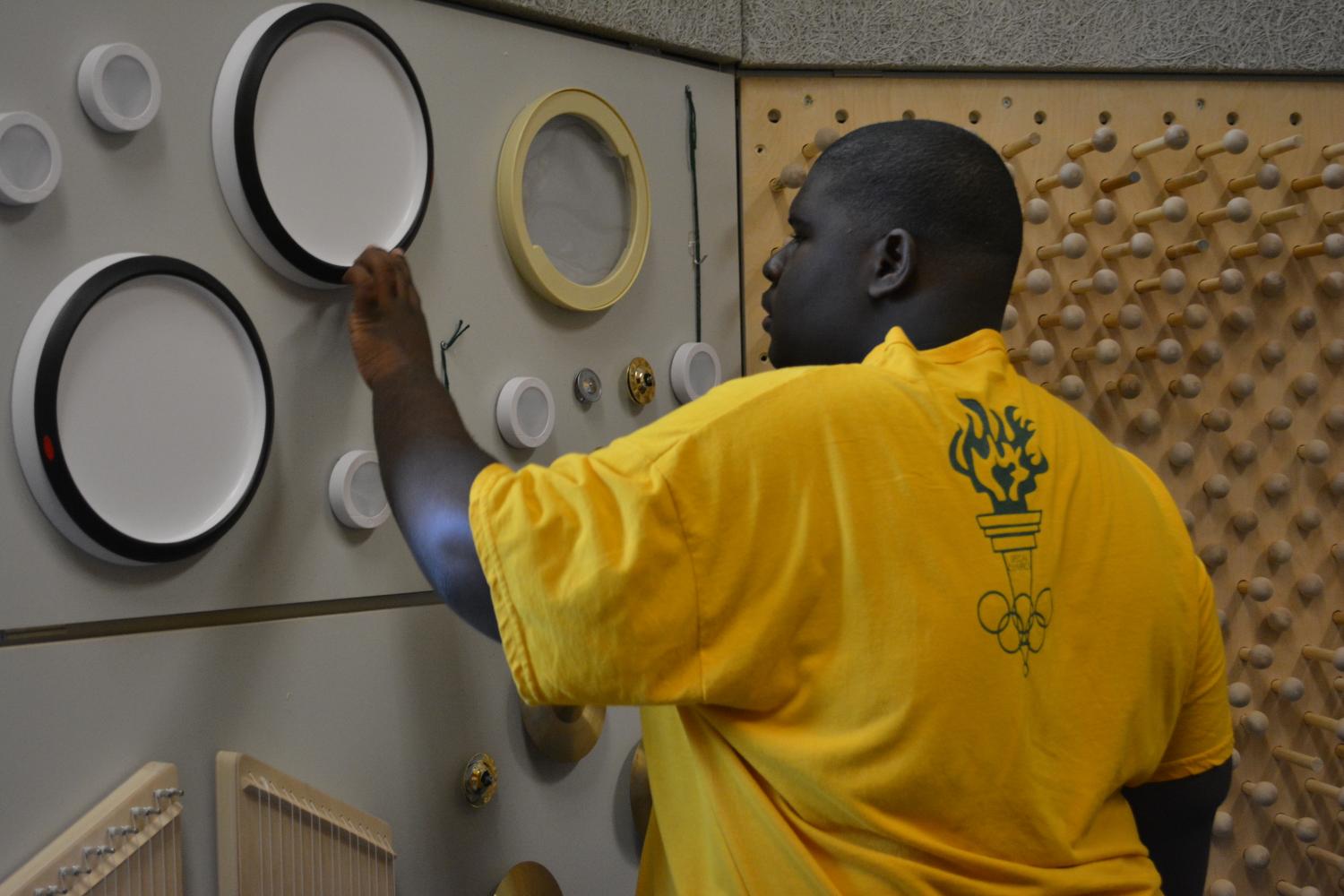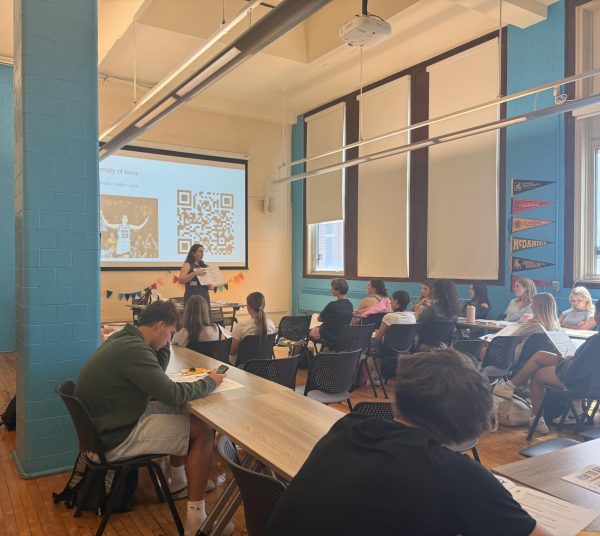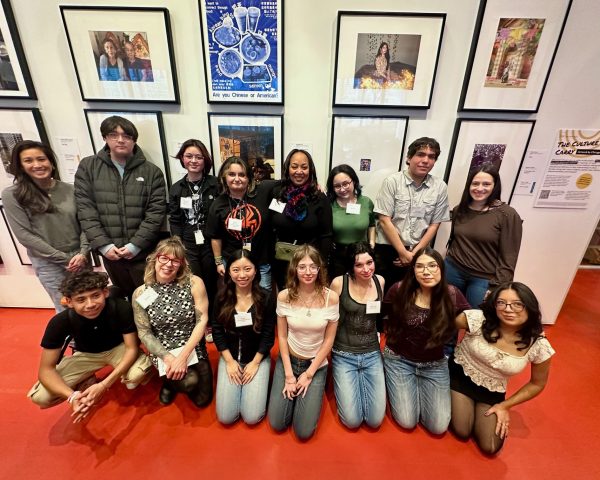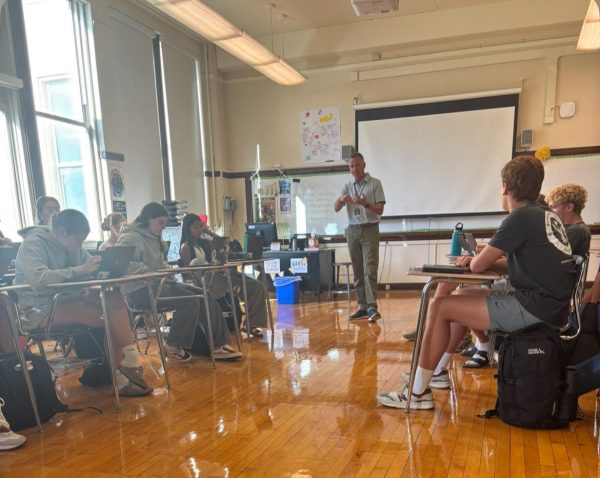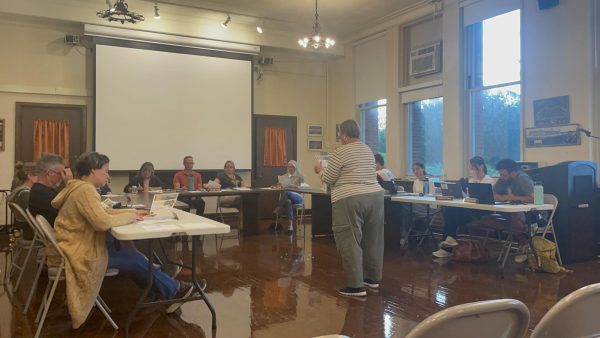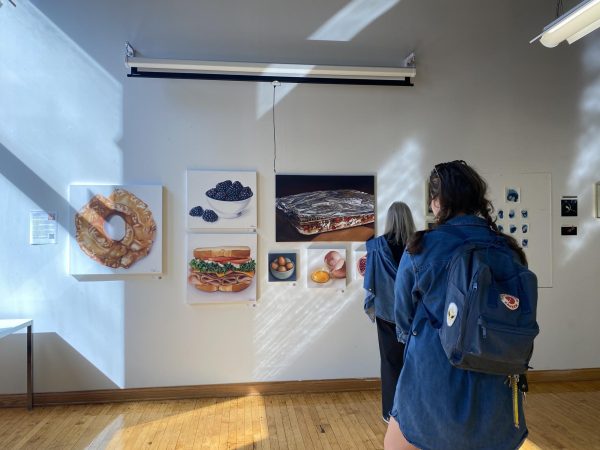Lane opens new Sensory Wellbeing Hub
A specialized environment where diverse learners can thrive
Elliott Murphy uses sensory stimulating artifacts in the Sensory Wellbeing Hub at the ribbon-cutting Aug. 30.
Five years ago, Assistant Principal Mollie Hart had a vision of a room where students in Lane’s Diverse Learners Program could go for peace and focus. On Aug. 30, this vision became a reality as student Elliott Murphy cut the ribbon for the “Sensory Wellbeing Hub,” also known as the Lane Tech Sensory Room.
“What I noticed was that there was no space that I felt was safe for the kids to go when they were upset, when they needed a quiet time and a break from the academics,” Hart said. “Maybe they were upset and punching something or hurting themselves and I wanted some place that they could go that was safe and protected, where an adult could be with them to regroup and refocus themselves.”
Lisa Adams, the project’s head architect from HKS, Inc., worked in collaboration with Hart, teachers of the diverse learners program, autism researchers and behavioral psychologists to create a room that would be beneficial to Lane students, but also easily replicated at other schools.
According to Adams, the room — constructed with a simple metal framing system and clip-on panels — consists of three zones, each designed to put different senses to use.
Zone one is a tactile garden with touch and auditory cues to help stimulate the students two most sensitive senses. Zone two is a restibit zone, designed to help someone in a state of overstimulation calm down. It includes games for small motor skills, a projection wall with calming videos and a light bright wall with color acrylic pegs. The third zone has a media wall with an interactive flat screen of calming biophilic scenes. This zone also includes a large cocoon, used as a micro environment. A child can go into the cocoon, pull it out against the media wall and have their own sensory experience.
“Throughout the course of their learning day, due to their disabilities, students become severely hyper-stimulated or hypo-stimulated. Some of the students can reach a state where they’re needing to have some sensory cues that help their brain to refocus so they are able to return to the classroom environment and be more successful with the daily lesson plans or engaging with other students.” Adams said.
Adams wanted the room to be based on research instead of copying what others have done with sensory rooms in the past. Through research, her team found that most sensory rooms include a lot of color and flashing lights, but these features tended to overstimulate Lane students.
“More often than not, what these students need is a rest area, somewhere where they can decompress and calm down,” Adams said. “In fact, everyone I think could really use that.”
The teachers of the Diverse Learners Program are still deciding how they want to use the space during the school day.
Ms. Mullin, a teacher in the Cluster Program, says the teachers are hoping to create a schedule so that students do not have to have certain behaviors to earn the room, but instead can incorporate it in as some kind of therapy to go along with the occupational and physical therapy their students receive throughout the day. She said the main goal is to see students be able to self regulate better after using the room.
“I walked through it with a student karabel and saw him engaged with every aspect of the room,” Mullin said. “He was playing with the computer components, he was using the trampoline and pegs. His attention was focused on the task he was working on and he was able to use it for different reasons. He was using the trampoline to get his energy out and the cocoon to relax.”
Elliott Murphy, a student in Lane’s Cluster Program, said he may use the room if one of his classmates is being loud.
“It feels good,” Murphy said. “I like the pulley things and the stretchy things. I’m strong when I pull them. It’s almost like a house or something.”
The sensory room would not have been possible without generous donations. Fundraising for the room was directed by the Lane Tech Alumni Association. The association’s president, Michelle Weiner, said it took about a year to fundraise using the alumni association website as the engine for the fundraiser. Adams also received a research grant, and HKS made the project their annual fundraising campaign.
Weiner said the team all had a very transformative experience throughout the process. She said she hopes the innovative room can be studied so other schools can benefit from the outcomes of Lane’s sensory room.
“We want to make sure that the students, whether they’re diverse learners or athletes or musicians or artists, that every student has the ability to be a champion in the School of Champions,” Weiner said.
Your donations directly fund the Lane Tech student journalism program—covering essential costs like website hosting and technology not supported by our school or district. Your generosity empowers our student reporters to investigate, write, and publish impactful stories that matter to our school community.
This website is more than a publishing platform—it's an archive, a research tool, and a source of truth. Every dollar helps us preserve and grow this resource so future students can learn from and build on the work being done today.
Thank you for supporting the next generation of journalists at Lane Tech College Prep!

Simone Brenner is an A&E Editor for the Warrior. She is passionate about writing and learning new things about the people at Lane and events going...

